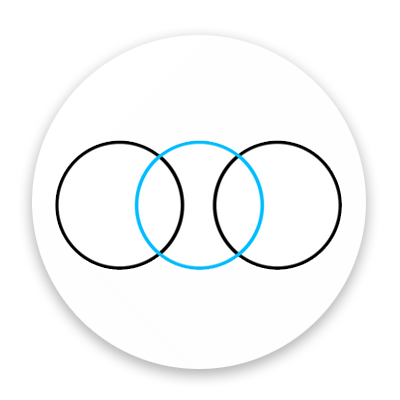I had decided to edit a supercut, so I chose one about strong, independent women in films. I did some research on supercuts, showing on YouTube, and also searching and watch films featuring strong and independent female characters.
A supercut is 'a compilation of a large number of short video clips, typically showing examples of a repeated or clichéd action or phrase in films or broadcasts' [Oxford Dictionaries]. Here are the examples of a super-cut below:
Rishi Kaneria edited two super-cuts below, and both were related to Rishi's passionate subject of colour in film. In Red: A Kubrick Supercut, it depicts the polysemy (multiple meanings of a sign) of red, echoing many themes in Kubrick films for instance; red means danger, death and blood which relates to themes of death and violence in The Shining (1980).
I completed a pin board with photos of female characters in films on Pinterest. At the end of my documentary American Independent Cinema, I edited a montage of moments from the iconic American Independent films, which was similar to a supercut. The only difference between the two editing styles was the pace; the super-cut has a faster pace than the pace in a montage.
Another inspiration for Femmes de Films, was a documentary style film called Beyond Clueless (Lyne, 2014). There were several montages of clips from modern teen films including the swimming pool and house party, which were generic conventional scenes in these films. Charlie Lyne, the director, talked about the process of collecting every single crucial part for the montages. He stated that he and his team wrote notes down when they noticed in every film for example; 'Ah, there is another pool scene'. They also used a pin board to scatter ideas for the film. For more details about the film, check out my review and the article I wrote about the preview screening and Q&A.
Here is the list of films (in alphabetical order), from 2000 to 2014, for Femmes de Films:
- Aeon Flux (Kusama, 2005)
- Atlantis: The Lost Empire (Wise & Trousdale, 2001)
- Beasts of the Southern Wilds (Zietlin, 2012)
- The Blind Side (Hancock, 2009)
- Brave (Andrews & Chapman, 2012)
- Bridget Jones' Diary (Maguire, 2001)
- Chicago (Marshall, 2002)
- Dreamgirls (Condon, 2006)
- Erin Brockovich (Soderbergh, 2000)
- Frozen (Buck & Lee, 2013)
- The Girl with a Dragon Tattoo (Fincher, 2011)
- The Golden Compass (Weitz, 2007)
- Hairspray (Shankman, 2007)
- Hanna (Wright, 2011)
- Harry Potter and the Prisoner of Azkaban (Cuaron, 2004)
- The Hobbit: The Desolation of Smaug (Jackson, 2013)
- How to Train your Dragon 2 (DeBlois, 2014)
- The Hunger Games (Ross, 2012)
- Iron Man 2 (Favreau, 2010)
- Juno (Reitman, 2007)
- Kill Bill: Volume 1 (Tarantino, 2003)
- The King's Speech (Hooper, 2010)
- Lara Croft: Tomb Raider (West, 2001)
- The Lord of the Rings: The Two Towers (Jackson, 2002)
- Miss Congeniality 2: Armed and Fabulous (Pasquin, 2005)
- Mr and Mrs Smith (Liman, 2005)
- Persepolis (Paronaud & Satrapi, 2007)
- Pirates of the Caribbean: At World's End (Verbinski, 2007)
- Pride & Prejudice (Wright, 2005)
- The Chronicles of Narnia: Prince Caspian (Adamson, 2008)
- Prometheus (Scott, 2012)
- Resident Evil (Anderson, 2002)
- Shrek Forever After (Mitchell, 2010)
- Spirited Away (Miyazaki, 2001)
- Thor (Branagh, 2011)
- Transformers (Bay, 2007)
- Treasure Planet (Clements & Musker, 2002)
- V for Vendetta (McTeigue, 2005)
- Wanted (Bekmambetov, 2008)
- X Men: The Last Stand (Ratner, 2006)
- The Young Victoria (Vallee, 2009)
As I looked at the list, I noticed that since 2006, the industry (still run by patriarchal companies) have produced more films, featuring strong female characters, than they were in between 2000 and 2005. I think the reason for this change was the film companies e.g. Disney became aware of the demands from the critics, the audience and particularly feminists. Another reason for this was that several films were based on or inspired by literature, comics, real-life stories and even video games.
Through the films on the list, there are five female directors, 11 female writers, 13 women, who create or co-create the stories, and 18 female producers worked in 25 out of 41 films. Only five films have one female producer each except in Shrek Forever After, it has only two female producers. The job as a producer is more common for women despite the rarity of female writers and directors. Brave is the only film in the list that has a female director (Brenda Chapman) who also a writer and created the story, and it has a female producer as well. Fran Walsh is the only female writer and producer who worked on two films (The Hobbit: The Desolation of Smaug and The Lord of the Rings: The Two Towers) in the list. There are over 600 female directors around the world including an award-winner Kathryn Bigelow (The Hurt Locker), Angelina Jolie (Unbroken), Jodie Foster (The Beaver) and Sofia Coppola (Lost in Translation).
